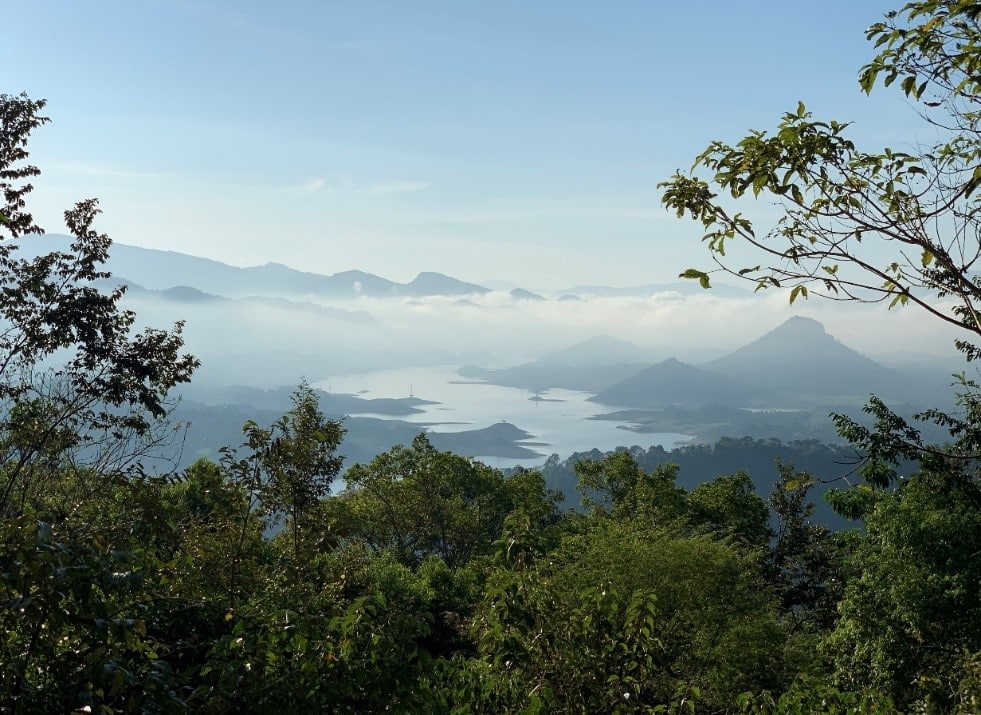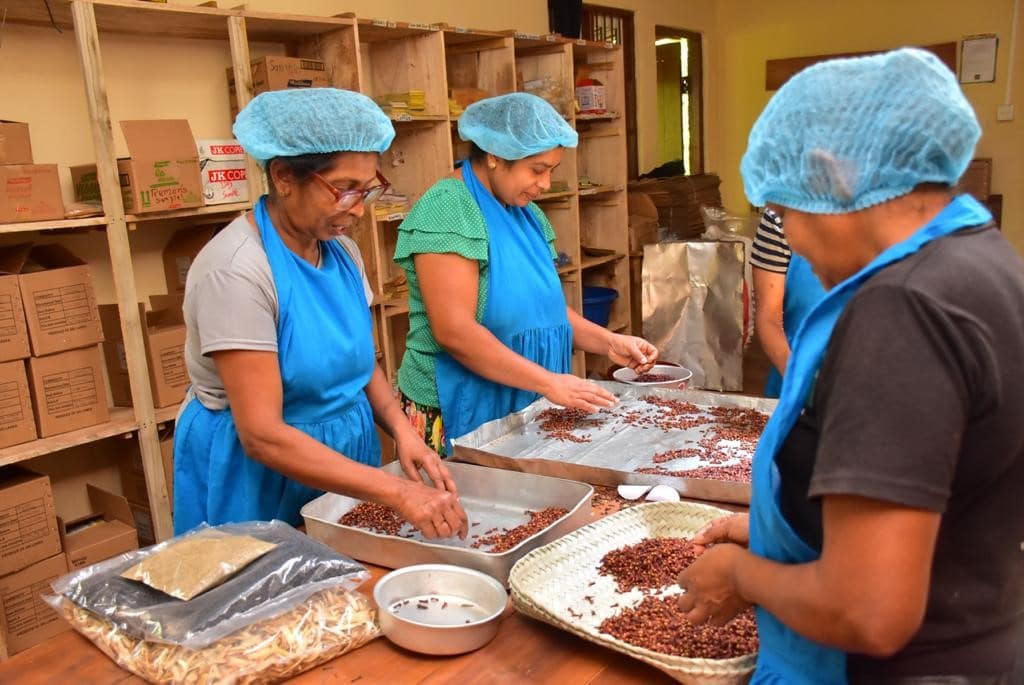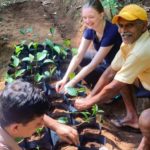Sandaya’s infectious giggle echoing up from the kitchen, Aberatne’s wide grin as he shows the turmeric crop flourishing just below the ground, a strength that belies Ganeshan’s narrow frame as he hauls a giant jackfruit from the forest, the village ladies’ chatter and smiles as they sort the best of the cloves. It is not just Sri Lanka’s incredible biodiversity that makes this place special, it is the people.

View over Victoria Lake. © Forest Healing Foundation.
About 45 mins from Sri Lanka’s cultural city of Kandy is a rural village called Wepathana. Located in the foothills of the famous Knuckles Conservation Forest and overlooking the vast Victoria Lake, this little village benefits from the eco-tourists who come to see its wildlife, yet maintains its culture and traditions.
2020 was a hard year for Wepathana, as it was for people all over the world. The lack of eco-tourism coupled with lockdowns and a wider decline in the Sri Lankan economy put a real financial strain on the community. As smallholders turned to alternative sources of income, deforestation around the village increased due to trees being sold for timber or forest being converted to agriculture, while many younger people deserted the area to look for work in the cities. At the Forest Healing Foundation, our first principle is to put the community at the heart of everything we do to protect forests, so it was time to act. And time to get creative!
What we found was that part of the answer was actually to return to a more traditional way of life in the forest. The forest found in this area is commonly known as a Kandyan Forest Garden, the result of an ancient agroforestry technique whereby villagers create a mosaic of native tree species interplanted with fruit and spice species. Think mangos, jackfruit, cocoa, cloves, pepper, nutmeg, cinnamon, all growing in the shadow of towering forest trees. By creating access to market and providing a fair price for this produce, our aim was to provide much-needed employment opportunities as well as a financial incentive to conserve the forest.

Eko Land staff sorting cloves in the new processing facility. © Forest Healing Foundation.
This was how Eko Land Produce was born. A brand focussing on high-quality forest produce that is grown, harvested, processed and packaged by the community in Wepathana. Eko Land takes steps to minimise the number of stages in the supply chain and ensure that all farmers receive a good price for their produce. This wouldn’t have been possible without the hard work and collaboration of the Eko Land team, supported by the local community and staff at the Forest Healing Foundation. Purpose-built spice dryers were designed from scratch, the teams took training courses with the Department of Agriculture, the branding and packaging had to be designed for function, aesthetics and sustainability, and relationships were developed with retailers to sell the produce.
There were of course highs and lows: our first attempt at building a spice dryer (literally) went up in flames, but the initiative is now going from strength to strength. A new processing facility has just been built to host more local employees to prepare the fruits and spices. Eko Land currently works with around 20 nearby farmers, as well as locals who harvest jackfruit from their own gardens/villages and receive payment for bringing it to be processed. It’s always great to see smiling faces arriving with buckets of fresh jackfruit, with eager children following behind! Over the last 12 months, Eko Land has processed approximately 1 ton each of jackfruit, cinnamon and cloves, and about 600 kg each of nutmeg and pepper. The scheme is helping to improve the livelihoods of the farmers too, with cinnamon farmers/peelers receiving around a 25% increase in price for their produce. Very soon this special produce that sustains both forests and communities in the tiny village of Wepathana, Sri Lanka, will be available as far away as the UK and the Netherlands!


Some of Wepathana’s faces of conservation. © Forest Healing Foundation.
This experience has reinforced our belief that successful conservation initiatives must be designed with the support of the local communities. We have benefited from their extensive experience and traditional knowledge: Manjula’s lessons on how to graft jackfruit saplings, the Department of Agriculture’s classes on converting waste nutmeg fruit into delicious chutneys, Kaliyani’s knowledge of the native forest species…the list goes on. This connection between people and the forest is deep and unbreakable. Given that the answer to the challenge we faced was found in the forest itself, well it makes you wonder if it’s really us saving the forest or if the forest is saving us…


